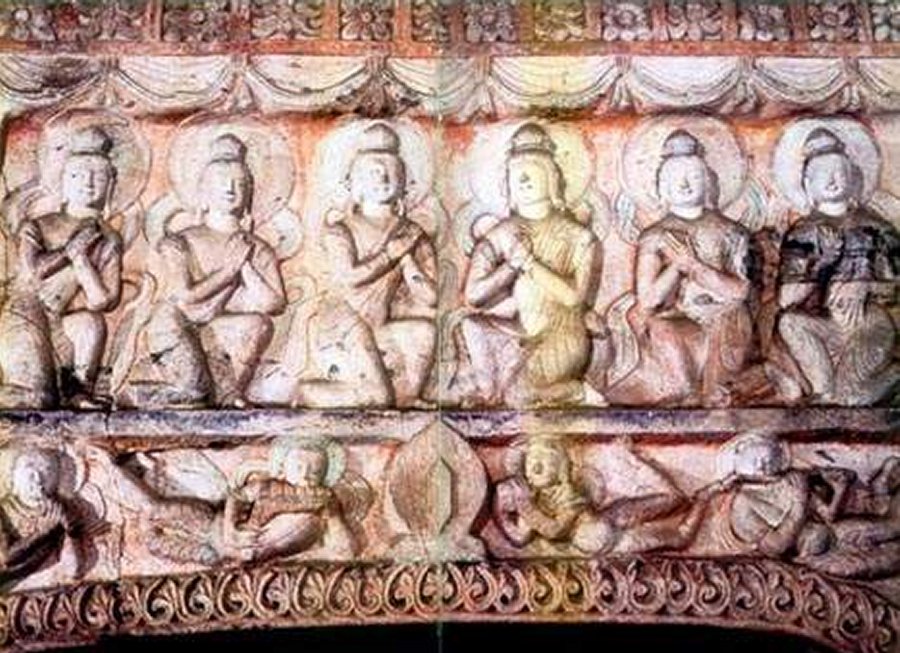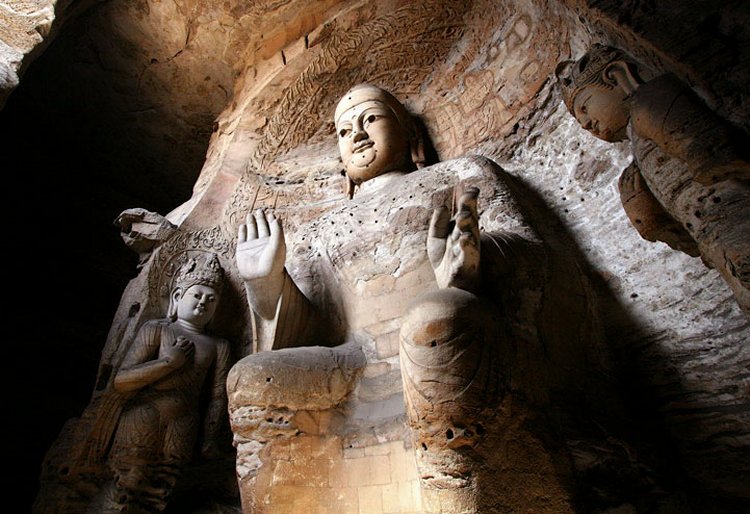MessageToEagle.com – Yungang Grottoes is a stone carving treasure that is renowned all around the world.
Richly decorated grottoes, known as Wuzhoushan Grottoes in ancient times, are located on the southern foot of the Wuzhou Mountains, in the Shi Li River valley, 16 km west of Datong City.
Now, a restoration project has been completed on the Yungang Grottoes, a 1,500-year-old Buddhist site in north China’s Shanxi Province, according to management authorities.

Restoration work was carried out on the Wuhua caves, or “five marvelous caves,” said to be the Yungang Grottoes’ most impressive due to their bright colors.
See also:
Yungang Grottoes: Marvellous Example Of Ancient Buddhist Rock-Cut Architecture
“The sandstone of the Yungang Grottoes has been threatened by exposure to harsh weather for centuries, and the painted sculptures and frescos inside the Wuhua caves are the most severely damaged,” said Zhang Zhuo, head of the Yungang Grottoes Research Institute.
“Water erosion, including mountain water infiltration and rain, is to blame for the damage,” Zhang added.

The cultural heritage authorities of Shanxi launched the restoration project at the Wuhua caves in June 2012 to reinforce the sandstone, slow down water erosion, and make the colors more visible.
“Wood fences to keep tourists from entering Wuhua have been removed. Visitors will find new protection measures inside, such as glass curtain walls to separate them from the historic relics, and equipment for security and environmental monitoring,” Zhang added.
Listed as a UNESCO World Heritage site in 2001, the Yungang Grottoes contain more than 51,000 statues of the Buddha, with the largest measuring 17 meters high and the smallest two centimeters.
MessageToEagle.com
source:






